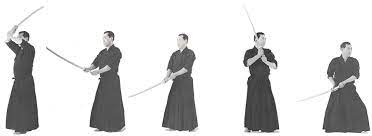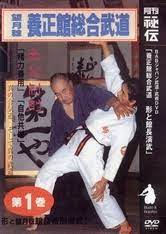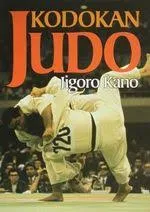This post will interrupt the current series of posts about the
development of the Jan de Jong (JDJ) jujutsu grading system as it is very pertinent
to the discussion.
The following was recently posted on Facebook by Aikido
Sangenkai (The Aikido Sangenkai is a non-profit martial arts dojo
(school) affiliated with the Aikikai Foundation in Tokyo Japan. We
are located in Honolulu, Hawaii on the island of Oahu (https://www.aikidosangenkai.org/about.html).)
The abovementioned Facebook post has attracted a great deal of attention
with most of it being supportive based on personal experience.
Note: I have not
confirmed the information detail.
Minoru Mochizuki's sho-dan certificate in Judo from
Jigoro Kano, 1927.
He would begin training with Morihei Ueshiba three years
later, in 1930, still a relatively junior student in Judo. One year after that,
in 1931, he would open his own Yoseikan Dojo in Shizuoka. One year after that,
in 1932, he would be awarded the two highest level Daito-ryu scrolls being
given at the time, "Goshinyo no te" and "Hiden ogi no
koto", after 2 years of training in Daito-ryu under Morihei Ueshiba and 7
years total of training in grappling arts. His fellow Daito-ryu student, Takuma
Hisa, would be awarded the highest certification in Daito-ryu, the Menkyo
Kaiden after around 6 years of training (3 with Morihei Ueshiba and 3 with
Sokaku Takeda).
This is in line with a comment by Ellis Amdur on e-Budo:
"Records indicate menkyo kaiden in 5-7 years in the
Meiji period. It is my belief and experience that koryu training takes far too
long, because many teachers, greedy for power and status, withhold information
or drag out the teaching."
This underlines the inflated timelines of modern day
rank/certificate promotion, where such advancements normally take 30 or 40
years, or more.
Many, including myself, would suggest that the Jan de Jong (JDJ)
jujutsu experience would bear out Amdur’s belief and experience in terms of
koryu training taking far too long and the inflated timelines of modern-day
rank/certificate promotion, however, the reason for doing so in the JDJ jujutsu
case is not as Amdur suggests (see below).
How long does it take to get a black belt in jujutsu at the
Jan de Jong Self Defence School (JDJSDS)? It was said that it takes at least 10
years. How did that number come about?
Peter Clarke and Robert Hymas are two of the only three that JDJ awarded rokudan. He did so shortly before he passed away in April 2003.
Clarke commenced training in 1971 (source: Jan de Jong
Self Defence School, Jan de Jong: the man, his school, and his ju jutsu system,
1997) and was one of the first three to be awarded shodan (the 'first wave') in 1981 (source: Greg
Palmer). That is 11 years, however, you will remember from a previous post that
there were only gradings up to ikkyu until the late 70s when JDJ developed the
shodan gradings so that he could have black belt instructors accompany him
teaching in Europe. If there were shodan grading attached to the kyu
system, would Clarke have graded shodan in less than 10 years?
Hymas commenced training in 1975 (source: see above)
and was one of the first three to be awarded shodan in 1981 (source: see
above). That is seven years. That is the fastest ever to be awarded shodan in the JDJ system, and
it was also under the abovementioned limitation, however, Hymas also worked as
a full-time instructor from 1978 to 1988 (source: abovementioned book) and he
did not go through the mon system which was introduced in 1978 (source:
abovementioned book).
That is something that has only come to light when
researching these posts; my instructors (which included all instructors teaching at the JDJSDS in 1983) never went through the mon system. They
teach it but they never went through it as it was introduced after they were
already higher graded. This will become relevant when the introduction and
interpretation of the mon system is explored in a future post.
I am the first shodan to have gone through the mon system. I
was on track to at least match Hymas’ feat in terms of shortest time to be
awarded shodan, and that was with going through the mon system and not being a
full-time instructor as Hymas was, but I did have an insane training regime as
I explained in a previous post. I was awarded shodan after nine years and that
was with going through the mon system, spending a year backpacking through
Western Europe, then a rite of passage for Australians, and engaging in the
intense ‘professional year’ of the Institute of Chartered Accountants. During
that time, I also obtained a Graduate Diploma in Applied Finance and Investment
in which I was awarded state dux and second in Australia. I don’t say those
things to aggrandise myself but to show there were other demands on my time,
including working full-time, that impacted on my training and progression.
Do I or Clarke or Hymas serve as a measure of how long it
takes to be awarded shodan in the JDJ jujutsu grading system? How long does it take the average person to be awarded shodan in the JDJSDS under the regime that includes mon and shodan gradings?
There are a number of JDJ jujutsuka who commenced training
around the same time that I did but were awarded shodan by the principal of one
of JDJ’s ryuha after JDJ passed away in 2003. That is 20 years to be awarded
shodan.
There are many factors that contribute to the length of time
to be awarded shodan in the JDJ tradition, however, it is safe to say, as Amdur argues above, that
it takes far too long in the JDJ jujutsu grading system.
I have come to refer to JDJ's teachings and therefore his ryuha that have been established after his passing as 'endangered.' If JDJ's teachings are to survive, the issue of the grading system and its dysfunction needs to be addressed. Part of that dysfunction is the training taking far too long and the inflated timelines of modern-day rank/certificate promotion. That dysfunction is the product of the development of the JDJ jujutsu grading system. Problem solving 101: identify the problem and its root causes. That is the purpose of this series of posts.
A final word: there are many ikkyu within the late JDJ
tradition that are deserving of a black belt - shodan, nidan, even sandan - because they had the expertise and knowledge the equivalent or better
of most within the jujutsu world, but they are denied a black belt because of
the grading system that they were engaged in.
This is often credited to intensity of training, or to
intensity of contact, but when we actually examine the records of how much many
people trained, and how much contact they had with their instructors, that's
really not the case. In many cases the practitioners were working, and training
no more than many people do in modern times, or actually had limited contact
with their instructors - as little or less than modern practitioners.
Note here that Jigoro Kano himself founded the Kodokan in
1882, at the age of 22, in the same year that he graduated from university -
after only 5 years of training in jujutsu.
This detailed information is verified. Kano developed his
own system which went on to become known as Kodokan Judo. But here’s the thing,
Kano was an ‘educator,’ aka a trained teacher.
In his professional life, Kanō was an educator. Important
postings included serving as director of primary education for the Ministry of
Education (文部省, Monbushō) from 1898 to 1901, and as president of Tokyo
Higher Normal School from 1900 until 1920.[4] He played a key role in making
judo and kendo part of the Japanese public school programs of the 1910s.
Kano developed a martial arts tradition that became a global
phenomenon. Nobody ever accused Kano of being a highly proficient exponent,
however, he was able to develop a true martial arts ‘system’ because he was a qualified
teacher. He had insights into the techniques that nobody else possessed because
he was a qualified teacher. Yoseikan budo is the product of Kano’s approach to
teaching because Mochizuki was an acolyte of Kano’s. This issue will be further
explored in the post regarding the introduction of the mon system.
There are many reasons behind the timelines or the
awarding of certifications in modern times, but the primary reasons that come
to mind are:
- Power and control within an organization.
- Student retention (which is related to the above, power
and control).
- Financial reasons - the constant income stream
generated by stretching promotions over a period of years with greatly inflated
pricing (which is also related to student retention).
- Poor instructional ability, often associated with poor
or incomplete transmission of information (this is particularly a problem in
modern Aikido).
- Deliberate withholding of information, or delays in
delivery of information, which is also related to the above, power and control.
Those reasons have been attributed to JDJ in relation to his
not providing the possibility of a shodan grading until the late 70s when he
needed black belt instructors to accompany him when teaching in Europe (see above). Those
reasons were speculated upon by high ranked students and instructors within the
JDJSDS and are still proposed now.
Again, NO! JDJ did develop the kyu grading system to support
a business, his sole source of income that went on to provide a very comfortable
lifestyle, however, he did not withhold a shodan grading for any of the
abovementioned reasons. As proposed in a previous post (see previous link) in this series, JDJ did
not have a shodan grading because he did not have a shodan grading and did not
need a shodan grading at that stage. There were no ulterior motives.
Rationalising the Jujutsu Grading System
Why didn't JDJ rationalise his jujutsu grading system? He kept on tacking on 'bits' based on his personal needs at the time, but why didn't he then step back and rationalise his jujutsu grading system?
JDJ was not big on reflection. That was possibly/probably due of his WWII experience where it was all here-and-now and based on personal survival. Don't look forward, don't look back. Another way of saying this is 'set and forget.' One example of this was the introduction of the kata in the kyu grading system.
JDJ was involved with the Australian Ju Jitsu Association (AJJA). They wanted a 'competition' format because competition was considered to be important, or at least something that was in demand. JDJ was not a fan of competition as a form of training, which will become the subject of a future post on his introduction of 'free fighting' gradings in his jujutsu grading system. JDJ develop a series of kata that were to be basis for a competition format. In order to support the AJJA, JDJ introduced those kata in the kyu grades of his grading system.Even when JDJ left the AJJA, he continued with the kata being part of the kyu grades. I argued long and hard for their removal. My argument was based on multiple points, one of which was that the grading system was already overly cumbersome and overly burdensome. Why add more to it just to support the AJJA competition format even when none of JDJ's students competed and JDJ had left the AJJA - set and forget.
I did include in my argument that if JDJ wanted to introduce a kata element into the kyu grades, then all he needed to do was pick five or six of the attack-defence combinations in the shinken shobu no kata grading to be performed in a kata format. The only extra training involved would then be the kata format.
I was a relatively junior instructor at the time, but I was arguing on behalf of the students. Why waste time training additional things that have no benefit for the students. Eventually, JDJ succumbed to my advocacy and the kata gradings were removed from the JDJ jujutsu grading system. If it were not for me, those kata would probably still be included in the JDJ jujutsu grading system that is used by the majority of the JDJ ryuha that were established after JDJ passed away. Why? Could it be that the common ethos of the JDJ instructors, with the exception of myself, was teaching what was taught without question?














